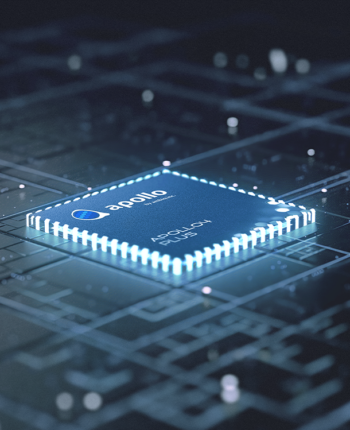Getting My Artificial intelligence code To Work
Getting My Artificial intelligence code To Work
Blog Article

Though the impact of GPT-three grew to become even clearer in 2021. This 12 months introduced a proliferation of enormous AI models crafted by numerous tech companies and leading AI labs, a lot of surpassing GPT-3 by itself in dimension and ability. How big can they get, and at what cost?
Sora builds on earlier research in DALL·E and GPT models. It utilizes the recaptioning system from DALL·E three, which entails building extremely descriptive captions for the Visible training knowledge.
More than twenty years of design, architecture, and administration experience in ultra-very low power and higher general performance electronics from early stage startups to Fortune100 firms together with Intel and Motorola.
This informative article focuses on optimizing the energy performance of inference using Tensorflow Lite for Microcontrollers (TLFM) for a runtime, but most of the methods utilize to any inference runtime.
Prompt: Stunning, snowy Tokyo city is bustling. The digicam moves from the bustling metropolis street, following several people today having fun with The attractive snowy climate and buying at close by stalls. Attractive sakura petals are flying through the wind along with snowflakes.
The same as a group of gurus would have recommended you. That’s what Random Forest is—a list of selection trees.
neuralSPOT is consistently evolving - if you desire to to contribute a effectiveness optimization Instrument or configuration, see our developer's manual for strategies on how to finest contribute for the challenge.
Prompt: A white and orange tabby cat is witnessed Fortunately darting via a dense garden, as if chasing one thing. Its eyes are extensive and delighted mainly because it jogs ahead, scanning the branches, bouquets, and leaves mainly because it walks. The trail is slender mainly because it makes its way in between all of the plants.
AI model development follows a lifecycle - 1st, the data that could be accustomed to coach the model have to be collected and organized.
Prompt: A flock of paper airplanes flutters through a dense jungle, weaving about trees as whenever they were being migrating birds.
Our website utilizes cookies Our website use cookies. By continuing navigating, we think your permission to deploy cookies as in-depth in our Privateness Policy.
Also, designers can securely create and deploy products confidently with our secureSPOT® engineering and PSA-L1 certification.
It really is tempting to concentrate on optimizing inference: it really is compute, memory, and Strength intense, and an exceptionally seen 'optimization concentrate on'. During the context of full system optimization, however, inference is generally a small slice of General power consumption.
This tremendous amount of money of data is to choose from and also ultra low power soc to a big extent effortlessly accessible—possibly while in the Bodily globe of atoms or maybe the electronic planet of bits. The only challenging portion is always to create models and algorithms which can assess and realize this treasure trove of information.
Accelerating the Development of Optimized AI Features with Ambiq’s neuralSPOT
Ambiq’s neuralSPOT® is an open-source AI developer-focused SDK designed for our latest Apollo4 Plus system-on-chip (SoC) family. neuralSPOT provides an on-ramp to the rapid development of AI features for our customers’ AI applications and products. Included with neuralSPOT are Ambiq-optimized libraries, tools, and examples to help jumpstart AI-focused applications.
UNDERSTANDING NEURALSPOT VIA THE BASIC TENSORFLOW EXAMPLE
Often, the best way to ramp up on a new software library is through a comprehensive example – this is why neuralSPOt includes basic_tf_stub, an illustrative example that leverages many of neuralSPOT’s features.
In this article, we walk through the example block-by-block, using it as a guide to building AI features using neuralSPOT.
Ambiq's Vice President of Artificial Intelligence, Carlos Morales, went on CNBC Street Signs Asia to discuss the power consumption of AI and trends in endpoint devices.
Since 2010, Ambiq has been a leader in ultra-low power semiconductors that enable endpoint devices with more data-driven and AI-capable features while dropping the energy requirements up to 10X lower. They do this with the patented Subthreshold Power Optimized Technology (SPOT ®) platform.
Computer inferencing is complex, and for endpoint AI to become practical, these devices have to drop from megawatts of power to microwatts. This is where Ambiq has the power to change industries such as healthcare, agriculture, and Industrial IoT.
Ambiq Designs Low-Power for Next Gen Endpoint Devices
Ambiq’s VP of Architecture and Product Planning, Dan Cermak, joins the ipXchange team at CES to discuss how manufacturers can improve their products with ultra-low power. As technology becomes more sophisticated, energy consumption continues to grow. Here Dan outlines how QFN chips Ambiq stays ahead of the curve by planning for energy requirements 5 years in advance.
Ambiq’s VP of Architecture and Product Planning at Embedded World 2024
Ambiq specializes in ultra-low-power SoC's designed to make intelligent battery-powered endpoint solutions a reality. These days, just about every endpoint device incorporates AI features, including anomaly detection, speech-driven user interfaces, audio event detection and classification, and health monitoring.
Ambiq's ultra low power, high-performance platforms are ideal for implementing this class of AI features, and we at Ambiq are dedicated to making implementation as easy as possible by offering open-source developer-centric toolkits, software libraries, and reference models to accelerate AI feature development.
NEURALSPOT - BECAUSE AI IS HARD ENOUGH
neuralSPOT is an AI developer-focused SDK in the true sense of the word: it includes everything you need to get your AI model onto Ambiq’s platform. You’ll find libraries for talking to sensors, managing SoC peripherals, and controlling power and memory configurations, along with tools for easily debugging your model from your laptop or PC, and examples that tie it all together.
Facebook | Linkedin | Twitter | YouTube